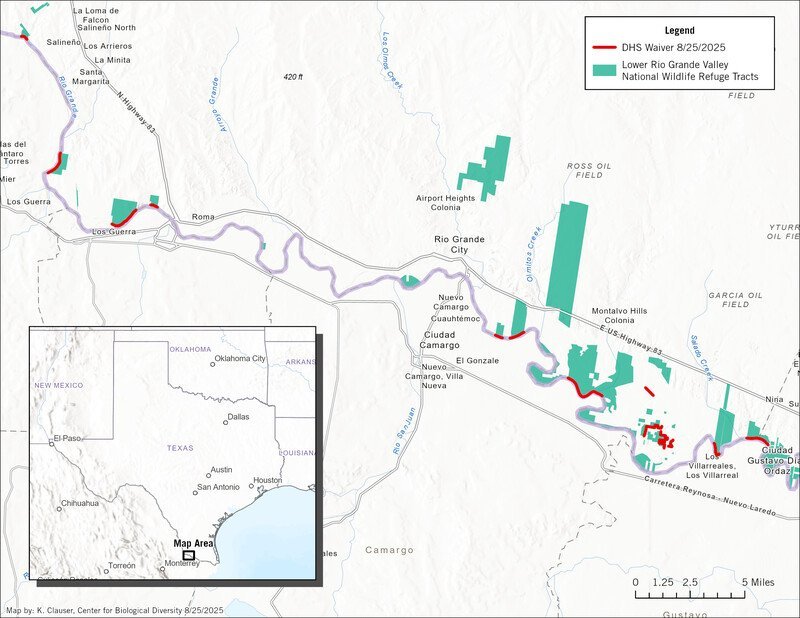Environmental Consequences of the Border Wall: A Look into the Current Waivers in Texas
Focus Keyword: Border Wall Environmental Impact
Introduction
The recent decision by the Trump administration to waive 31 environmental and public health laws to expedite the construction of the border wall through the Lower Rio Grande Valley National Wildlife Refuge has raised significant concern. This move impacts not only the delicate ecosystems of South Texas but also the communities and species that rely on this critical habitat.
The Waivers: What Laws Are Being Ignored?
The waivers allow the U.S. government to bypass essential regulations aimed at protecting the environment and public health. The laws exempted include:
- National Environmental Policy Act
- Endangered Species Act
- Clean Water Act
- Clean Air Act
- Native American Graves Protection and Repatriation Act
- Safe Drinking Water Act
- National Historic Preservation Act
- Migratory Bird Treaty Act
- Migratory Bird Conservation Act
- Archaeological Resources Protection Act
- Paleontological Resources Preservation Act
- Federal Cave Resources Protection Act
- National Trails System Act
- Noise Control Act
- Solid Waste Disposal Act
- Comprehensive Environmental Response, Compensation, and Liability Act
- Archaeological and Historic Preservation Act
- Antiquities Act
- Historic Sites, Buildings, and Antiquities Act
- Eagle Protection Act
- Administrative Procedure Act
- Section 438 of Energy Independence and Security Act
- National Fish and Wildlife Act of 1956
- Fish and Wildlife Coordination Act
- Wild and Scenic Rivers Act
- Farmland Protection Policy Act
- National Wildlife Refuge System Administration Act
- National Wildlife Refuge System Improvement Act of 1997
- Wild Horse and Burro Act
- Rivers and Harbors Act of 1899
- Coastal Zone Management Act
These waivers facilitate the rapid construction of wall segments across 13 refuge tracts, jeopardizing vital wildlife habitats and crucial community resources.
Environmental Impact: A Threat to Biodiversity
The Lower Rio Grande Valley National Wildlife Refuge serves as a sanctuary for some of the nation’s rarest species, including the endangered ocelot and aplomado falcon, as well as hundreds of migratory birds such as green jays and Altamira orioles. The new wall segments threaten these animals, fragmenting critical habitats and severing established wildlife corridors. The ecological damage could also disrupt the natural flow of the Rio Grande, a crucial water source for wildlife and local communities alike.
Endangered Species at Risk
The implications of the border wall extend beyond wildlife, endangering rare plants like the Zapata bladderpod, Walker’s manioc, and Texas ayenia. Each of these species plays a significant role in the area’s ecological balance and is now at heightened risk due to the construction efforts.
Community Concerns: Impact on Culture and Livelihood
The concerns regarding the border wall are not limited to environmental impacts. Local communities see this as a reckless attack on their culture and livelihoods. The wall will disrupt established human migration patterns, impacting trades, tourism, and community relations between the U.S. and Mexico.
Recent data highlights a significant drop in border crossings — over 90% this past year, bringing national apprehensions down to a mere 6,072 in June 2025 compared to 87,606 in June 2024. In the Rio Grande Valley alone, the number of illegal crossings has dwindled to about 50 daily in 2025 from over 1,500 in December 2023. This raises questions about the necessity of constructing additional barriers when border security appears to be improving.
The Bigger Picture: Border Militarization
Beyond environmental and community implications, the border wall represents a larger pattern of ongoing border militarization that threatens human rights, civil liberties, and local economies. The wall doesn’t merely serve as a physical barrier; it also symbolically reinforces divisions that impact international relations and national identity.
Conclusion
The decision to waive fundamental environmental protections in favor of border wall construction poses grave risks not only to biodiversity but also to the cultural fabric of border communities. As environmental safeguards are overlooked, the urgency for balanced policy decisions that prioritize both national security and ecosystem integrity becomes increasingly critical. The debate surrounding the border wall continues to evolve, urging policymakers to consider long-term consequences rather than short-term gains.
For further information on the Lower Rio Grande Valley National Wildlife Refuge, visit the U.S. Fish & Wildlife Service webpage.
Related Articles
- Understanding the Endangered Species Act
- The Importance of Wildlife Corridors
- Impact of the Border Wall on Local Communities
By shedding light on these issues, we can engage in more informed discussions about the future of border security, environmental conservation, and community welfare.


